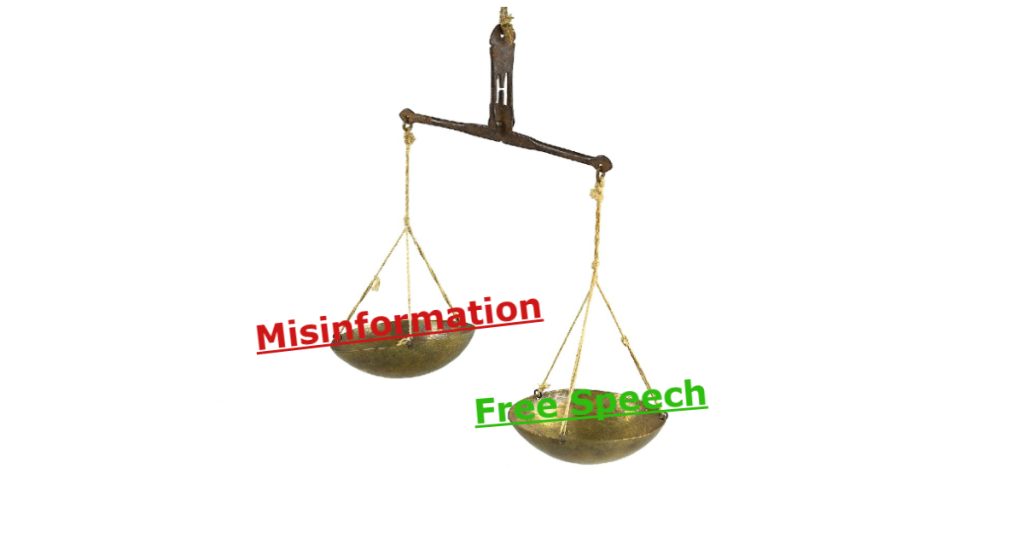Navigating the Tightrope: Free Speech and Misinformation in the Digital Age
The digital revolution has ushered in an era of unprecedented information access, democratizing communication and empowering individuals to share their perspectives with the world. However, this newfound freedom has also unleashed a torrent of misinformation, blurring the lines between fact and fiction and posing a significant threat to informed public discourse. Striking a balance between protecting free speech, a cornerstone of democratic societies, and combating the spread of harmful falsehoods has become one of the most pressing challenges of our time.
This complex dilemma was recently brought into sharp focus by Cecilia Akin-Paz, an eighth-grade student researching the intersection of free speech and misinformation on social media. Her insightful questions, posed to Roger Culos, a seasoned observer of online discourse, highlight the intricacies of this issue and the lack of easy answers. Culos, grappling with the real-world implications of these challenges, acknowledges the exhaustion and frustration that can arise from navigating the often-volatile landscape of online discussions. Yet, he remains steadfast in his belief that open dialogue, even when uncomfortable, is essential for a free society.
Culos advocates for a cautious approach to content moderation, emphasizing that social media companies should intervene only in cases of demonstrably false information causing direct harm, such as scams, hoaxes, or threats of violence. He cautions against overreach in censorship, arguing that suppressing debate can be more dangerous than allowing the free flow of information, even if some of it is inaccurate. History, he notes, is replete with examples of ideas once considered false later being recognized as true. Instead of silencing dissenting voices, Culos suggests fostering critical thinking and open discussion as a more effective antidote to misinformation.
Identifying and removing misinformation presents a formidable challenge due to the difficulty in discerning intent, the rapid evolution of false narratives, and the sheer volume of content generated online. The limitations of AI moderation and the potential for bias in human moderation further complicate matters. These limitations underscore the need for a cautious approach to content removal, focusing on clear-cut cases of harmful falsehoods rather than attempting to police every instance of perceived misinformation. Culos highlights the dangers of overzealous content removal, citing instances where critical information, such as emergency warnings during wildfires or public health alerts about measles outbreaks, was inadvertently suppressed by social media platforms.
The responsibility for combating misinformation does not solely rest with social media companies. Users also play a crucial role in evaluating the information they encounter online. Cultivating critical thinking skills, verifying information from multiple sources, and being wary of emotionally charged claims are essential for navigating the digital landscape. Media literacy, which involves understanding bias, checking sources, and seeking out diverse perspectives, is paramount in the age of information overload.
Social media platforms can contribute to discouraging the spread of misinformation through algorithmic adjustments that prioritize reputable sources, provide context to disputed claims, and facilitate fact-checking. However, caution is warranted, as overly aggressive algorithms can inadvertently suppress legitimate information. A balanced approach that combines automated detection with expert review and user feedback can help minimize bias and improve accuracy in identifying misinformation.
Determining truth in the online sphere requires a multi-faceted approach. A broad consensus of independent sources, including professional journalists, scientists, and fact-checking organizations, offers a more reliable path to truth than relying on a single entity. Transparency, which involves disclosing sources and evidence, is crucial for building trust and accountability. Similarly, labeling misinformation should involve a combination of independent fact-checkers, academic institutions, and platform transparency to minimize bias and enhance accuracy.
The ongoing debate about free speech and misinformation underscores the delicate balance that must be struck between protecting open dialogue and mitigating the harms of false information. This requires a collaborative effort involving social media companies, users, fact-checkers, and other stakeholders. Fostering critical thinking, promoting media literacy, and embracing transparency are key ingredients in navigating this complex landscape and ensuring that the digital age remains a space for informed and productive discourse. Finding the equilibrium between unfettered expression and responsible information sharing is a continuous process, one that demands vigilance, critical engagement, and a commitment to upholding the principles of both free speech and truth-seeking. The challenge lies in crafting solutions that address the harms of misinformation without stifling the free exchange of ideas that is essential for a vibrant democracy. The conversation continues, and as technology evolves and new challenges emerge, ongoing dialogue and adaptation are crucial for navigating this ever-evolving digital landscape.


